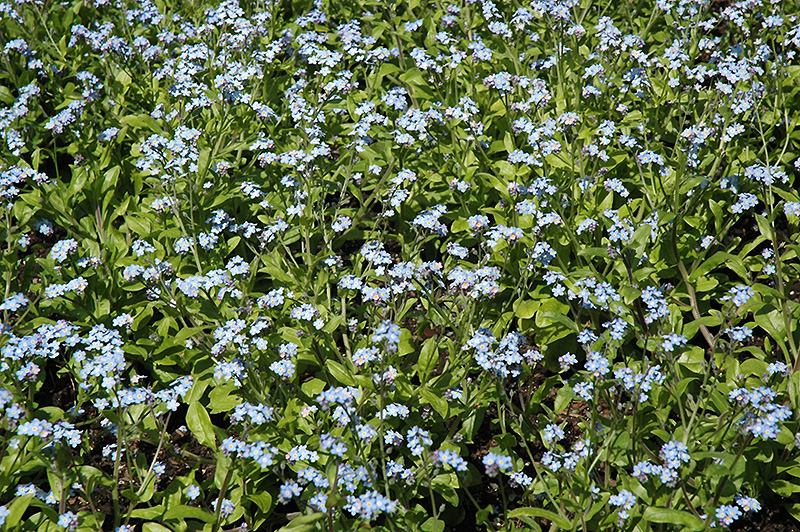Early Bird Blue Forget-Me-Not
Myosotis sylvatica 'Early Bird Blue'
Plant Height: 6 inches
Flower Height: 8 inches
Spacing: 8 inches
Sunlight:
![]()
![]()
Hardiness Zone: 3a
Description:
A low mound forming variety that is smothered in early blooming sky-blue flowers, each flower accented by a tiny gold eye; excellent for massing with spring blooming bulbs
Ornamental Features
Early Bird Blue Forget-Me-Not features delicate cymes of sky blue flowers with gold eyes at the ends of the stems from early to late spring. Its narrow leaves remain green in color throughout the season.
Landscape Attributes
Early Bird Blue Forget-Me-Not is an herbaceous biennial with a mounded form. Its medium texture blends into the garden, but can always be balanced by a couple of finer or coarser plants for an effective composition.
This plant will require occasional maintenance and upkeep, and is best cleaned up in early spring before it resumes active growth for the season. Deer don't particularly care for this plant and will usually leave it alone in favor of tastier treats. Gardeners should be aware of the following characteristic(s) that may warrant special consideration;
- Self-Seeding
Early Bird Blue Forget-Me-Not is recommended for the following landscape applications;
- Mass Planting
- Border Edging
- General Garden Use
- Naturalizing And Woodland Gardens
Planting & Growing
Early Bird Blue Forget-Me-Not will grow to be only 6 inches tall at maturity extending to 8 inches tall with the flowers, with a spread of 10 inches. When grown in masses or used as a bedding plant, individual plants should be spaced approximately 8 inches apart. It grows at a fast rate, and tends to be biennial, meaning that it puts on vegetative growth the first year, flowers the second, and then dies. However, this species tends to self-seed and will thereby endure for years in the garden if allowed.
This plant does best in partial shade to shade. It prefers to grow in average to moist conditions, and shouldn't be allowed to dry out. It is not particular as to soil type or pH. It is somewhat tolerant of urban pollution. This is a selected variety of a species not originally from North America.

